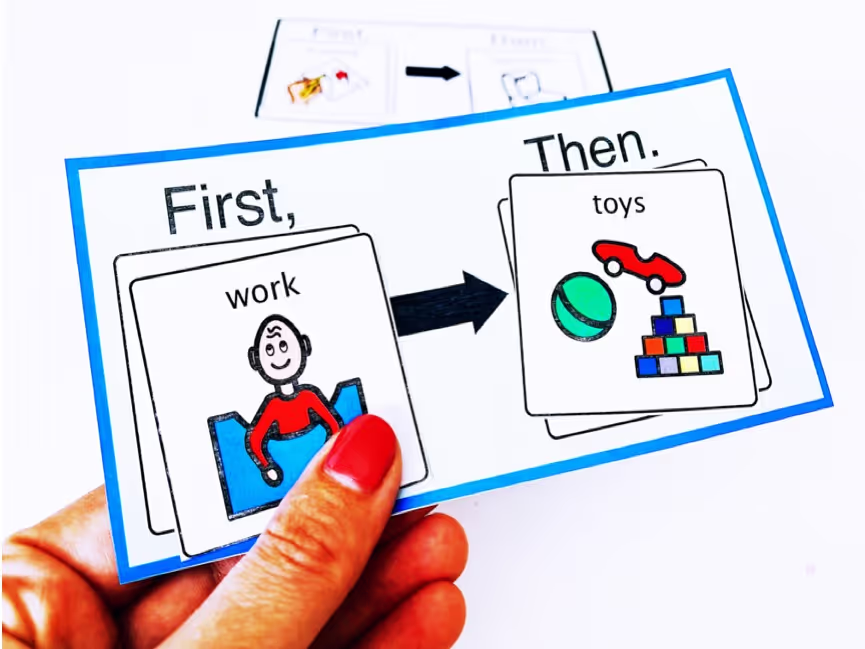What is the Premack Principle? Definition & Examples
The Premack principle states a person will provide a lower probability behavior to gain access to the behavior they prefer.


What is the Premack Principle?
The Premack principle was developed by David Premack, a psychologist, back in 1965. It was designed to help provide insight into human behavior. Although the focus can be used in various areas of psychology, in recent years, it has become renowned in the area of Applied Behavior Analysis (ABA).
Definition: The Premack principle states a person will provide a lower probability behavior to gain access to the behavior they prefer. A less preferred activity is an activity that someone will be less likely to choose to do on their one, the lower probability or low probability behavior. The preferred activity is always known as high-probability behavior, and this means it's an activity that someone would normally choose to do on their own.
The Premack principle is an excellent choice for people who are new to ABA therapy because the steps are easy to follow.
Origins of the Premack Principle
The origins of the Premack principle came from David Premack back in the 1960s. He was searching for insight into human behavior, and he wanted to understand more about what would prompt people to do something they didn't enjoy. His principle is a "first/then" scenario. He even did studies on his ideas to see if they panned out by using different scenarios.
Examples of the Premack Principle
There are five general steps to the Premack principle, and they are easy to follow. For this example, we are going to use an easy scenario that many people can relate to.
Scenario: "If you finish all of your food, you will be given dessert."
In this scenario, the "finish your food" is considered to be the low-probability behavior, and the "you will get dessert" is the high-probability behavior. Most kids love eating dessert, but they do not always enjoy eating everything on their plate, especially if it has something on it they do not enjoy eating.
Now, let's break this scenario down into the steps of the Premack principle.
Step 1: The adult should identify the low-probability behavior or activity. In this scenario, it would be eating all of the food on the child's plate. This is the low-probability activity because usually there is at least one thing on the plate that the child doesn't like or doesn't always finish.
Step 2: The adult should identify the high-probability behavior or activity. In this scenario, it would be getting to eat dessert. Most children enjoy eating dessert, which is what makes this a high-probability activity since it is something the child would do with little prodding.
Step 3: Once the adult has identified the two activities, they will need to present them to the child. This can be done verbally or with visuals. If the child has issues with verbal cues, the adult might point to the plate of food and say "eat", and then gesture to the dessert.
Step 4: In this step, the adult will wait to see if the child completes the low-probability behavior. In this case, the child would have to eat all of the food on the plate. If they failed to do this, the adult would withhold the dessert or the high-probability activity.
Step 5: In the final step of the Premack principle is when the child has completed the low-probability activity and is given access to the high-probability activity. In this example, the child would be given dessert for finishing all of their food.
A few other examples of using the Premack principle would include:
- You can have a break after you finish reading one chapter.
- Finish your homework, and then you can play video games.
- If you want to go swimming, put your swimsuit on, and then we will go.
What are other names for the Premack Principle?
There are several names that the Premack principle has known, and each one has its meaning behind it.
One of the most popular names for the principle is known as Grandma's rule. It was given this name due to the if/then nature of the contingency.
Just about everyone has heard their grandmother say, "if you finish all of your food, you can have dessert." Children enjoy eating dessert which is a high-p activity, and having to finish their dinner is a low-p activity.
The next name that the principle is known for is the "first/then" principle. If you do one thing first, then you will get something you prefer as a reward.
Supporting Research
Since Premack first released his ideas, there have been all kinds of studies done on both animals and humans to see if his ideas were supported. Premack conducted one of the first studies himself to test his ideas and see if they worked.
He used playing pinball and eating candy as his high-probability tester after asking his subjects which one they preferred.
The two scenarios he used for his study made the kids play pinball to be able to eat candy, and then the second the children had to eat candy to play pinball.
He found out that the only time the reinforcement effect worked was if the child enjoyed the second behavior in the sequence more, which showed evidence of the Premack principle. Over the years, there have been other studies conducted a lot like Premack's initial study, and they all showed evidence that the Premack principle worked when used correctly.
Limitations
Although the Premack principle has been proven to work in many scenarios, there are several limitations that it has. For instance, you have to look at all of the activities that are possible for the child because if there are a lot of activities available, it might make the reinforcer a less-probable behavior.
Secondly, you have to make sure that the high-probability activity is at a higher rate than the low-probability behavior. Otherwise, the high-p activity might not have as great an effect. An example of this would be, if the adult says, if you study for one hour, then the child can play video games for one hour. If the child dislikes studying, the promise of one-hour video games might not be enough to play.
However, the way this might be fixed is by lowering the amount of study time or increasing the time the child can play video games to make the "want" balance out more.
References
Recent News
Related articles

Working With Autistic Children: 10 Career Options
Want to work with autistic children? Here are 10 career options for you to consider.

What Is The Age Limit For ABA Therapy In Indiana?
Find out what the age limit is for receiving Applied Behavior Analysis (ABA) therapy in Indiana.

What Is The Age Limit For ABA Therapy In Arizona?
Find out what the age limit is for receiving Applied Behavior Analysis (ABA) therapy in Arizona.

Verbal Operants In ABA: Definition & Examples
In Applied Behavior Analysis, verbal operants are a type of verbal behavior.

Token Economy: Examples & Applications in ABA
A token economy is a procedure that was developed to help reduce maladaptive behaviors and increased desire behaviors by providing a tangible conditioned reinforcer.

Trigger Analysis In ABA: Definition & Examples
Trigger analysis is a segment of ABA therapy where children are taught by therapists to pinpoint the behaviors and emotions that happen before, during, and after an event that takes place.

Variable Ratio Schedule & Examples
A variable-ratio schedule is a random reinforcement where responses are reinforced following varied responses afterward.

Task Analysis In ABA Therapy: Examples & Strategies
Task analysis is a process of teaching that divides complicated activities into sections involving easier steps for students to more easily take.

Stimulus Equivalence In ABA: Definition & Examples
Stimulus equivalence shows how relationships can manifest among different types of stimuli in different situations.

Speech Therapy For Autism: ABA vs. Speech Therapy
ABA therapy can help individuals with speech impairments learn to better identify and utilize the language skills they already have.

Stimulus Control Transfer ABA: Definition & Examples
Stimulus control is defined as an expression used to detail circumstances where a behavior is triggered by the existence or absence of a stimulus.

Social Validity In ABA: Definition & Examples
Social validity is the acceptance of interventions concerning behavioral changes.

